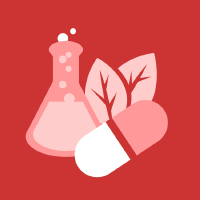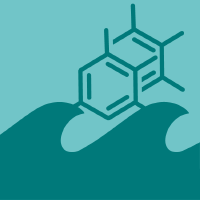Topic Menu
► Topic MenuTopic Editors




Antioxidant Activity of Natural Products—2nd Edition
Topic Information
Dear Colleagues,
Natural products play an important role in the discovery and development of active ingredients with a wide range of applications. Its interest comes mainly from its antioxidant effects, which have been widely studied and pursued by researchers from different disciplines. Antioxidants can neutralize free radicals and reactive species, thereby counteracting oxidative damage, and, consequently, they are able to reduce the incidence of oxidative-stress-related diseases and interrupt free-radical-mediated chain reactions. This justifies their wide range of applications in medical and therapeutic goods, cosmetics, food additives, and biomaterials.
Natural products from different sources have been studied over the last decades, but much more remains to be discovered regarding the structural elucidation and mechanisms of the antioxidant action of their molecules. The discovery of new sources and compounds, more sustainable and selective extraction as well as isolation techniques, and more reliable as well as accurate analytical methods is still ongoing, as is the assessment of the role of antioxidants in human health and well-being. The development and standardization of model systems to accurately assess the biological or technological relevance of the antioxidant effect has been challenging but still necessary.
This transdisciplinary topic aims to bring together original research and review articles focusing on recent advances in the extraction, isolation, and characterization of plant-, fungal-, algal-, microbial-, and animal-derived antioxidants; the bioactivity, bioaccessibility, and bioavailability of antioxidants, as well as their interactions with other compounds; the molecular mechanisms of antioxidant action and their effects on particular metabolic or signaling pathways; the role of antioxidants in the prevention and treatment of health conditions; and the stabilization as well as application of antioxidants in foods, nutraceuticals, pharmaceuticals, and biomaterials. Other subjects related to this topic are also welcome.
Dr. José Pinela
Dr. Maria Inês Dias
Dr. Carla Pereira
Dr. Alexandra Plácido
Topic Editors
Keywords
- secondary metabolites
- natural antioxidants
- in vitro, in vivo, and in silico models
- structure–activity relationship
- natural product chemistry
- oxidative stress and antioxidant defense
- free-radical-mediated chain reactions
- extraction and separation methods
- antioxidant ingredients and biomaterials
Participating Journals
| Journal Name | Impact Factor | CiteScore | Launched Year | First Decision (median) | APC |
|---|---|---|---|---|---|

Biomolecules
|
4.8 | 9.2 | 2011 | 19.4 Days | CHF 2700 |

International Journal of Molecular Sciences
|
4.9 | 9.0 | 2000 | 20.5 Days | CHF 2900 |

Molecules
|
4.6 | 8.6 | 1996 | 16.1 Days | CHF 2700 |

Scientia Pharmaceutica
|
2.5 | 4.6 | 1930 | 38.1 Days | CHF 1000 |

Marine Drugs
|
5.4 | 10.1 | 2003 | 13.3 Days | CHF 2900 |

Plants
|
4.1 | 7.6 | 2012 | 17.7 Days | CHF 2700 |

Preprints.org is a multidisciplinary platform offering a preprint service designed to facilitate the early sharing of your research. It supports and empowers your research journey from the very beginning.
MDPI Topics is collaborating with Preprints.org and has established a direct connection between MDPI journals and the platform. Authors are encouraged to take advantage of this opportunity by posting their preprints at Preprints.org prior to publication:
- Share your research immediately: disseminate your ideas prior to publication and establish priority for your work.
- Safeguard your intellectual contribution: Protect your ideas with a time-stamped preprint that serves as proof of your research timeline.
- Boost visibility and impact: Increase the reach and influence of your research by making it accessible to a global audience.
- Gain early feedback: Receive valuable input and insights from peers before submitting to a journal.
- Ensure broad indexing: Web of Science (Preprint Citation Index), Google Scholar, Crossref, SHARE, PrePubMed, Scilit and Europe PMC.
Related Topic
- Antioxidant Activity of Natural Products (34 articles)

